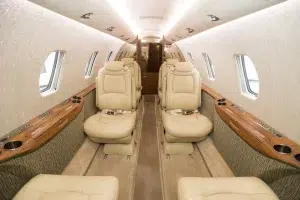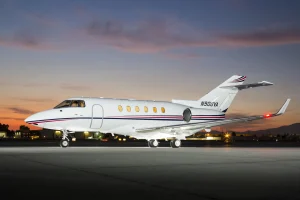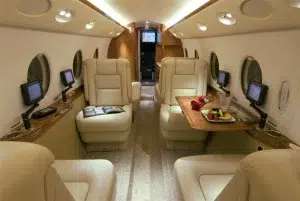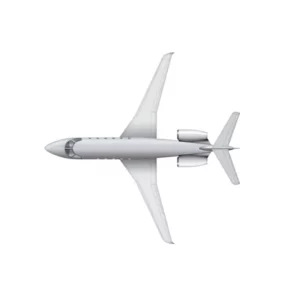Legacy understands that the primary drivers for private aviation are maximizing time and control. Business leaders and Ultra-High Net Worth private travelers need to get the most out of every minute and have the ability to control their travel schedule as simply and efficiently as possible.
Legacy’s world-class concierge program coupled with the power of the Nomad Hill travel platform allow clients to effect changes to their complex travel itineraries (aircraft schedule, hotel bookings, ground transportation services, VIP arrangements) all though a single point of reference affording even the most exacting client the power to control their schedule and react to opportunity in today’s fast-paced global environment.
Legacy Aviation Group has developed one of the most comprehensive Flight Card Programs in the industry, allowing our clients unmatched accessibility to a multitude of new aircraft. We are dedicated to providing you with flexibility and enjoy private jet travel without the additional fees and burdens found with our competitor card programs.
Aircraft safety is always our primary focus and never sacrificed. All aircraft maintain the highest rankings on all 12 ARG/US Platinum safety-rating categories. We believe that safety is primordial in the business jet travel industry.
Find the jet that fits your needs below.

The Citation Latitude is a clean sheet design mid size jet introduced at the 2011 NBAA Convention. It has a stand up cabin with a flat floor and is the widest Citation cabin. It was launced as larger than the Citation XLS and cheaper to purchase than the Citation Sovereign. It is expected to compte with the Embraer Legacy 450.
It will be powered by two Pratt & Whitney Canada PW306D with 5,760 lbs of thrust each. The Latitude wilkl also have Garmin G5000 Avionics Suite.
First flight was in February 2014.
Passengers
8
Cabin Dimensions
837 Cubic Feet
Range
2,455 Nautical Miles
Speed
372 Mph
Cargo Capacity
127 Cubit Feet









The Citation XLS is a Citation Excel with more payload, improved PW545B engines and improved range.
The model 560XL Citation XLS combines a shortened Citation X cabin with a modified Citation V wing. Its two P&W PW 545B turbofan engines provide 330 NM more range and 19 knots faster normal cruise speed than the Citation Excel. The cabin provides comfortable seating for 7 passengers.
Cessna introduced the Citation XLS+ in 2006. The XLS+ replaces the Honeywell Primus 1000 Avionics suite with the Rockwell Collins Pro-Line 21 Avionics Package. The engines have been improved; the XLS+ will be equipped with two P&W 545C turbofan engines that now have FADEC installed.
Cessna introduced the Citation XLS in 2003 and deliveries commenced shortly afterwards.
Passengers
6
Cabin Dimensions
583 Cubic Feet
Range
1,528 Nautical Miles
Speed
394 Mph
Cargo Capacity
90 Cubit Feet












The Hawker 800 won its Supplemental Type Certificate (STC) in 1994. It is essentially a Hawker 700 with Honeywell’s up-rated TFE 731-5R engines replacing the earlier TFE 731-3 engines. With the -3 engines the Hawker 700 was a sluggish performer on hot days and high altitudes. With the -5 engines and the additional 600 pounds of thrust, the performance deficiencies were corrected and along with adding and additional 430 NM of range. 307 Hawker 800’s were produced.
In 1995 Raytheon introduced the XP version of the Hawker 800. The TFE 731-5BR engines produce 360 pounds of additional thrust significantly improving Balanced Field Length and adding an additional 80 NM of range. The 800XP also features the Collins Proline 21 avionics suite.
The Hawker 800XPi was introduced in 2005. This model features an upgrade to the Collins Pro-Line 21 Avionics Suite, a new interior and cabin management system.
The Hawker 850XP was introduced at the 2005 NBAA Convention in Orlando, FL. The 850XP comes equipped with Raytheon Aircraft designed winglets. The winglets were sized to provide distinct performance improvements while not impacting airframe inspection schedules. The range of the Hawker 850XP has seen a 100 nautical mile increase. Other performance improvements include up to eight percent improvement in time-to-climb plus faster airspeeds and block speeds.
Deliveries of this model started in 2005.
Passengers 7
Cabin Dimensions 741 Cubic Feet
Range 2,525 Nautical Miles
Speed 410 Mph
Cargo Capacity 50 Cubit Feet









The Hawker 800 won its Supplemental Type Certificate (STC) in 1994. It is essentially a Hawker 700 with Honeywell’s up-rated TFE 731-5R engines replacing the earlier TFE 731-3 engines. With the -3 engines the Hawker 700 was a sluggish performer on hot days and high altitudes. With the -5 engines and the additional 600 pounds of thrust, the performance deficiencies were corrected and along with adding and additional 430 NM of range.
In 1995 Raytheon introduced the XP version of the Hawker 800. The TFE 731-5BR engines produce 360 pounds of additional thrust significantly improving Balanced Field Length and adding an additional 80 NM of range. The 800XP also features the Collins Proline 21 avionics suite.
The Hawker 900XP is a mid sized jet that utilizes the Hawker 800 series cabin. The 900XP also has enhanced winglets and new Honeywell TFE 731-50R engines with improved performance at high altitude and hot climate.
The Hawker 900XP was introduced at the 2006 NBAA Convention in Orlando, Florida.
Passengers 7
Cabin Dimensions 741 Cubic Feet
Range 2,525 Nautical Miles
Speed 410 Mph
Cargo Capacity 50 Cubit Feet









The Learjet 60XR is a Learjet 60 with the Collins Proline 21 avionics unit. Cabin layout has also improved. The new cabin design includes a window in the lav. In turn, the Learjet 60 was derived from the Learjet 55.
The Learjet 55 was Lear’s entry into the medium sized business jet field. In designing the 55, Learjet utilized the earlier Longhorn 28/29 wing with winglets and married it to a larger fuselage. The step-down aisle in the cabin has 5 ft 9 inches of headroom. Power is supplied by two Honeywell TFE 731 engines, which produce 3,700 pounds of thrust each.
The Learjet 55B introduced a digital flight deck, modified wings, and an improved interior. The 55C was equipped with Delta Fins that improve performance and handling. Further improvements and a larger cabin resulted in the Learjet 60. The improved Learjet 60 first flew in June 1991 and the fuselage is 3 ½ feet longer than the Learjet 55. It is powered by Pratt & Whitney Canada PW305 turbofan engines.
Deliveries of the Learjet 60XR began in 2006.
Passengers 7
Cabin Dimensions 606 Cubic Feet
Range 2,044 Nautical Miles
Speed 466 Mph
Cargo Capacity 48 Cubit Feet









The Gulfstream G150 was announced at the 2002 NBAA Convention and is a derivative of the G100. Changes to the G150 include a wider cabin, upgraded avionics and a redesigned nose. The eight passengers G150 has 95 more cubic feet of cabin space, an extra 12 inches in width, two more inches in height and seven more inches in length than the G100. The G150 has oval side windows like the G200 and in the cockpit, a larger windshield. Collins Pro Line 21 avionics are installed instead of the G100’s Pro Line 4. The nose is modified to be more aerodynamic and will look more like that of the G200. The G150 is powered by two Honeywell TFE731-40AR turbofans. The G100 wings and empennage have been retained.
Certification was obtained in 2006 and deliveries started the same year.
Passengers 7
Cabin Dimensions 595 Cubic Feet
Range 2,760 Nautical Miles
Speed 449 Mph
Cargo Capacity 80 Cubit Feet











Simply Unmatched
Dominican Republic's Finest Upscale Property Collection.

Simply Worry-Free
Safe and secure booking, and 24/7 customer support.

Simply Unforgettable
Crafting Timeless Memories: Impeccable Stays, Every Time.
Need More Information?
Ascend To Unprecedented Travel Experiences. Reach Out Now For Your Personalized Jet Charter Details!
Contact Us Now!

